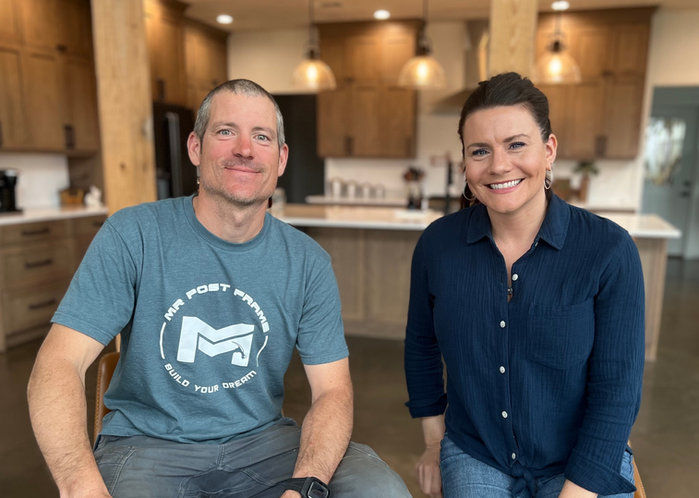Hello, everyone! Today, we're kicking off a new build, and we've named it "The Remington." The location is beautiful, and we're planning for a 1,600 square foot ranch, initially designed as a two-bedroom with an office, but easily convertible into a three-bedroom. It's an exciting project, featuring a front porch and a cozy back porch.

One key challenge we're facing is the foundation. We're situated at the bottom of a hill, and there's a considerable amount of water flowing down. To address this, the property owner brought in bulldozers and a compactor to level the ground. There was an existing foundation nearby, so instead of column footings, we're opting for a 64-inch frost wall with a 20-inch wide, 8-inch thick footing. For the walls, we're using ICF forms, which are 8 inches thick and provide excellent thermal insulation.
Considering our Midwest building zone (Zone 5a), this choice will ensure we meet the necessary standards. We'll keep you updated on the progress. Despite the expected rain tomorrow, the weather looks favorable for the next 10 days, allowing us to complete the footing and wall.

Now, let's dive into the foundation layout. Each side is numbered, and I've organized the two by eights for the footing, making it efficient to put them up when the time comes. For this project, we're using Fox Blocks due to availability in our area. We have 8-inch wall forms with 2 inches of insulation on both sides. We also have corner blocks that fit into the post-frame home design.
Typically, I wouldn't handle the foundation, but local professionals have a long waitlist. To expedite the process, the property owner, who is a heavy equipment operator, and I are taking on the foundation together. When constructing a house, it's essential to balance improvements with budget constraints. In this series, I'll showcase our construction process, explain our decisions, and provide insights for your own projects.

Despite facing challenges like unexpected rain causing mudslides during foundation excavation, it's crucial to remain adaptable and focused on finding solutions. In this episode, we discuss the foundation layout, the impact of weather, and the importance of problem-solving in the construction process.

Using string lines, the Pythagorean theorem, and a stability layout station, we ensured precise measurements for our post frame home's foundation. Dealing with rain-related issues, we adapted our schedule, emphasizing the need to tackle challenges head-on. In preparation for pouring the foundation, we dug a trench, laid out the formwork with 2x8s, and used a laser level for accuracy. Despite setbacks, such as over-digging due to encountering rocks, we persevered.
To address water accumulation after heavy rain, we considered excavating a trench to aid drainage. The video concludes with a preview of the next steps, including compacting the trench bottom, setting up rebar, and beginning framing.
Stay tuned for the upcoming episodes where we continue the construction process, share more insights, and answer any questions you may have. Remember, every build has its unique challenges, and finding effective solutions is part of the journey. Subscribe for more updates on the Remington build. Thanks for watching!"
Thank you,
MR Post Frame

Patreon Group:
Interested in tackling your build on your own? If you want to explore the possibility of being your GC or self-building, our Patreon membership is for you! It's a community of like-minded people offering support, discounts, Q/A, and more.